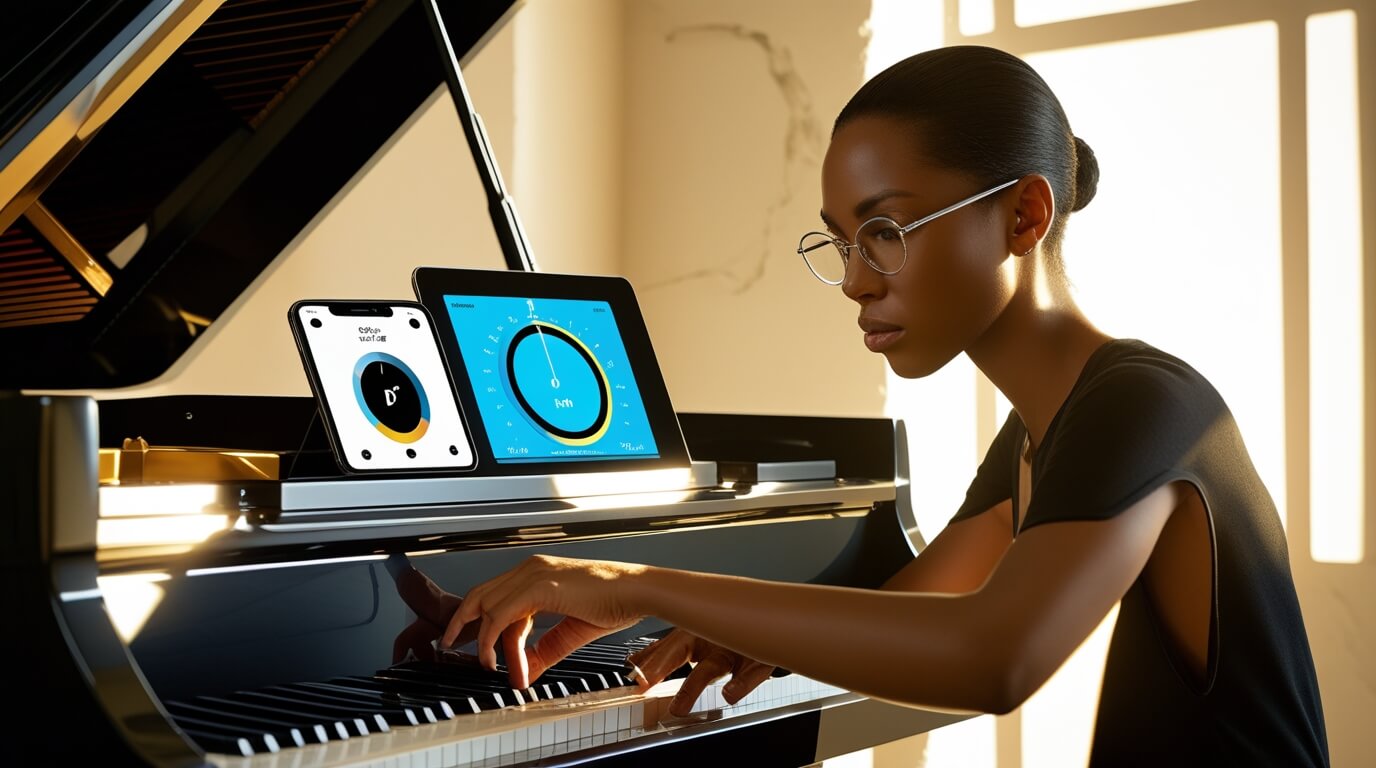August 12, 2025

Digital pianos are fantastic for one big reason — unlike acoustic pianos, they don’t go out of tune due to temperature or humidity changes. They use recorded or synthesized samples stored in their memory, meaning the pitch remains stable over time.
But “tuning” a digital piano isn’t about turning screws or adjusting strings — it’s about making software-based pitch adjustments to keep your instrument sounding right, whether you’re practicing solo, playing along with recordings, or performing with a band.
This guide will walk you through everything you need to know, including when and why to adjust pitch, how to match your piano with other instruments, and what to do if your settings are completely messed up.
When people say they “tuned” a digital piano, they’re usually referring to one of three adjustments:
You can check your specific model’s features in the manufacturer’s manual. For example, Yamaha’s official support site has free downloadable PDFs for every model, as do Roland and Casio.
Even though the pitch is digitally locked, you might still notice it sounds “off” if:
The easiest way to check is by using a tuner app like Pano Tuner or TonalEnergy. Play the A4 key (middle A) and check if it reads exactly 440Hz. If it’s more than a few cents off, it’s time to adjust.
Most digital pianos make this process simple:
Example: On a Yamaha P-series, you hold down the A-1 key while pressing other keys to increase or decrease pitch in 0.2Hz steps. Roland’s user manual library lists similar steps for their FP and RD series.
The transpose function is incredibly useful if:
For example, if you need to play in F# but only know the C major fingering, set your transpose to +6 semitones and play as if you were in C. Platforms like Roland’s Learn to Play offer free tutorials on how to use transpose effectively.
When playing with others, matching pitch is crucial. Here’s how:
Guitarists often use Fender Tune for accurate tuning — you can use the same app for matching your piano pitch.
Sometimes you’ll accidentally hit a wrong combination and the piano will sound strange.
If you’re completely lost:
This will restore original tuning, transpose settings, and sound library defaults. You can find the reset steps for your model in the official brand support pages like Casio Reset Guides.
If your digital piano produces wobbly, warbling, or uneven pitch, it’s not a tuning issue — it could be:
In that case, contact authorized repair services. Both Yamaha Service Locator and Roland Repair Centers list certified technicians.
Stay up to date with the latest tips, expert insights, product reviews, and step-by-step guides to help you grow, create, and succeed—no matter your industry or passion.